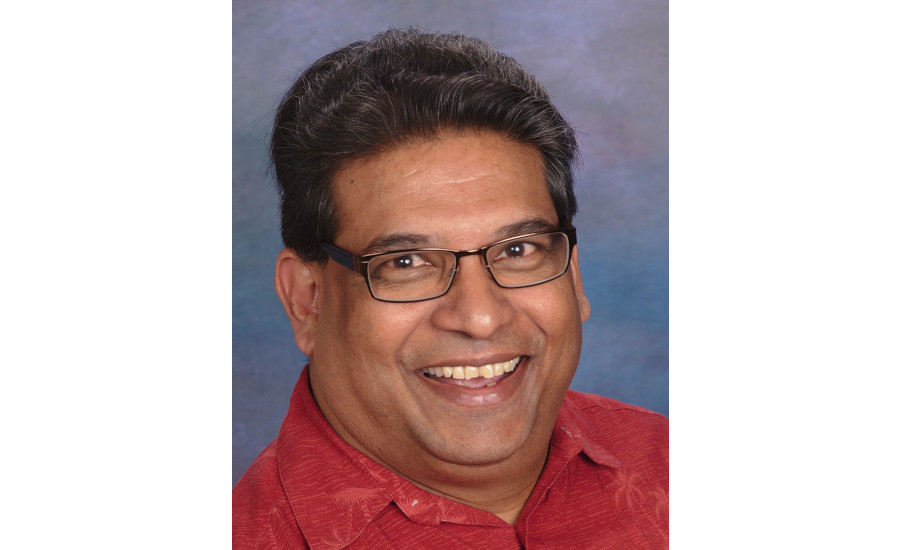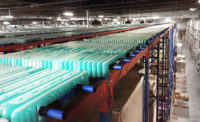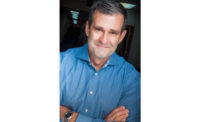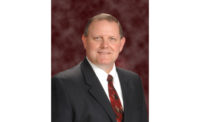Editor’s Note: Every successful project starts with a framework. A vision statement. A blueprint.
The editors of Engineered Systems are proud to present The Blueprint — a Q&A interview with HVACR engineering’s leading voices. These one-on-one discussions will examine the trade’s history, current industry trends, and the factors shaping the sector’s future.
Panasonic Corp.’s first room air conditioner was developed in 1958. Since then, the manufacturer has become a “household” name in both the commercial and residential markets, producing a complete portfolio of products that include a variety of VRF and mini-split solutions.
Recently, Malcolm Persaud, national sales and product manager, Panasonic, sat down with Engineered Systems’ editor-in-chief, Herb Woerpel, to discuss the company’s latest releases, industry trends, the future of the HVACR market, and more.
Engineered Systems: Introduce those reading this article to Panasonic. What type of commercial equipment/technologies do you manufacture?
Malcolm Persaud: Panasonic has been in the heating and cooling industry since 1958. The first air conditioning product developed was for residential then over the years, we developed commercial products to include VRF up to 36 tons, absorption chillers etc. Today, we offer 36-ton units, including configurations that offer multiples of 36 tons, for larger buildings.
We have the full solution from residential right through large commercial buildings, both providing heat pumps and recovery systems as well as a full line of integrated communications systems that allows us to seamlessly integrate with building management systems at almost any time. Using protocols like BacNet, Modbus, or Lon Works, for example, gives us the opportunity to integrate with existing BMS or set up new building control sequences.
Engineered Systems: Can you identify one factor that’s really shaping the built environment?
Persaud: Indoor air quality has and will demand more attention in the industry as building envelopes become tighter. Additionally, load-matching and demand-type heating and air conditioning are also on the rise. It’s no longer only necessary for us to provide heating and cooling. The critical question becomes, is the heating or cooling adequate to maintain a stable temperature in each zone?
So, if you have a 95°F day outside, obviously, your air conditioner will be running much longer than it will on an 87° day. So, the difference between traditional systems and the type of systems that Panasonic produces is that we will not need to run 100% capacity on the 87° day. We offer a portion of what is required to maintain stability and thus deliver comfort as the temperature fluctuation occurs. We're only using the energy necessary for those conditions. That’s called load matching — how do we match that load precisely to maintain constant room temperature? Today’s smart VRF systems are tracking “glide” in room temperature while simultaneously modulating output capacity to maintain set temperature — this is a dynamic process. Comfort is also affected by humidity and fresh air. Therefore, to truly manage comfort, modern a/c systems must have integrated controls that react to changes in temperature, humidity, and CO2. We’re talking about not just what you feel in terms of temperature, but what you consider to be a comfortable environment? Do we need to look at the CO2 ppm in the zone? If we do, and we need to bring fresh air in to create an environment that has the required amount of oxygen to keep us comfortable and maintain a safe environment, then that becomes part of this comfort formula. Temperature is one part of that formula. The feel, CO2 ppm, and humidity are also part of that formula. Comfort is not just about temperature anymore. It’s a dynamic control of temperature, humidity, and the indoor air quality.
Engineered Systems: Panasonic’s commercial equipment and controls are designed to help solve this comfort equation, correct?
Persaud: Yes, that’s correct. Working with Schneider Electric, we're now able to actually open a damper and bring in fresh air in a measured quantity to maintain the ppm of CO2 and bring on or off a humidifier or dehumidifier to control the humidity in the zone. So, we're not drying the air out too much or even putting too much moisture in the air. We're able to adjust the levels based on feel. In the summer months, sometimes we're uncomfortable — not because the temperature is high but because the humility is high. Bringing in technologies like Schneider Electric, which integrate directly with Panasonic’s, creates a plug-and-play solution. There's no gateway involved, which allows us to take control of temperature, humidity, and CO2 to help control comfort.
Engineered Systems: Panasonic has another comfort control and cost-saving solution, ECONAVI. Can you share some more details on that technology?
Persaud: That unit is all about dynamic comfort control. It delivers temperature modulation based on occupied/unoccupied control at rest or based on the activity in the zone. Frankly, it's all about energy costs. If you don't have anybody in the room, after 30 minutes, the control will setback in 2° intervals to a maximum of 4° to protect the fixtures and fittings in that room and to make sure that the temperature is relatively constant but not setback too much that it gets so cold that the paint deteriorates. The zone is monitored for occupancy or activity. With no occupation or activity detected in the room, we don't need to be at the comfort temperature points, rather we need to be at a temperature that actually sustains the ability of the fixtures, paint, lighting, etc. If somebody’s leaving the room absent, it senses that and sets back that room’s temperature by 2°. It’s not switching it off because switching it off causes another issue. It throttles it back and uses less energy during those periods of time when the room has no people inside.
I'll give you an example. I've just left my office and am now sitting in a conference room. So, in a half hour, my office will setback its comfort temperature. It also senses that I’m using the conference room, so it moves the load from one space to another. And, because I’m talking in here, there’s a lot of hot air in this room, making that load transfer necessary [laughing].
Engineered Systems: As an engineer, these incremental efficiency gains are very important, especially when you're talking about commercial structures that span thousands of different rooms.
Persaud: Correct. In commercial establishments, this effect is multiplied thousands of times over. And, therefore, those small incremental energy savings add up over the month of consumption. People today are working flexible hours. They’re coming into work very early and leaving early, especially here in Atlanta, where the traffic is horrendous. The ECONAVI technology modulates automatically; you don't have to go in and touch your air conditioning system because it detects human presence and reacts immediately. It’s a dynamic, sensor-driven, reactionary thermostat. It doesn't have to learn your behavior over a specific period of time; it reacts to what’s happening in real-time.
Engineered Systems: Let's shift and discuss the company as a whole. What were some of the highlights you guys had in 2018?
Persaud: The focus of last year, and what remains the focus over the next few years as well, is providing integrated solutions, especially in our commercial business. By integrated solutions, I mean good hardware that is easily connected to control systems — one system that reacts to customers’ needs and solves the comfort equations we discussed earlier. But there is another aspect of that. We must train the contractors who are putting the equipment in; we have to mobilize the training of engineers, so they can specify these new solutions. It’s key to educate the folks who are specifying it or installing it so that it provides the best results.
And, thirdly, for 20 years afterwards, the end users need to understand what they have because if you have this great technology, and you’re not using its optimum performance, then it's pointless. Integrated solutions aren’t only connecting the hardware to the software, they’re connecting the manufacturer to the end user and connecting the end user to the folks who are involved in the selection, specification, and installation of the equipment.
Engineered Systems: Integration is a hot topic throughout the industry. It’s something you’re taking very seriously, correct?
Persaud: I can tell you that it's not taken lightly. Traditional business was always, “Hey, we sell a one-to-one air conditioner. It cools and heats. We sell it over the counter and the contractor comes in, buys it, puts it in, and we wash our hands of it.”
I think the industry now has some responsibility to ensure that when you change technology, you help the end user to understand what they’ve bought and how they can gain the best benefit for that over the next 20 years. It’s not effective to say you have this great system, but it is being used in the same manner as a traditional on-off air conditioning. We have a responsibility as a manufacturer; we have a responsibility as the people who develop these exceptional technologies to explain to the end users, developers, and those creating new buildings why these technologies are necessary and what's in it for them. It’s a big challenge, but we cannot afford not to do it.
Engineered Systems: What’s Panasonic’s big focus for 2019 and 2020?
Persaud: In the commercial world, we’ve spoken to engineers, architects, developers, and contractors. You know, when you specify and install, that process lasts 12-18 months. There’s a 20-year cycle of operation or more in that facility. Several different tenants will rotate throughout the same building. They may move to a bigger building because their business has grown. And so those folks need to be kept abreast of what's happening. We, as a manufacturer, will have a part to play in ensuring they have the comfort, stability of operations, and actual robustness of the equipment and learn how best to use that equipment to generate the cost efficiencies we talked about. We still have work to do when it comes to explaining to end users how best to really get those efficiencies out of their operations.
Engineered Systems: How exactly are you strengthening those relationships with the end users? Is it through test groups? Or are you conducting surveys?
Persaud: So, it starts with the contractors. When they hand over the building, they will hand over the operations manuals, technical manuals, the communications protocol, etc. We must equip those same contractors or service teams with the education and knowledge when they return for service every three or six months. It’s important they discuss the technology with the end users. These contractors will see the changes of tenants coming through, and they will have to go through that process of best-use scenario.
In the long term, this allows us to build a relationship with end users so, in the future, we can grow our industry with this type of equipment because the end user is much more informed. We must also see an ROI from end users’ perspective, because end users are our future customers.
In a commercial building that employs 100 people, maybe 15 know the equipment that was recently purchased while 85 are not as informed, therefore, we can understand so much more by just having those conversations. When the time comes for them to buy equipment for their own homes – they will not need to be convinced that Panasonic’s systems work great. They’ll say, “The maintenance contractor told me all about this technology, so I may look at purchasing a Panasonic system myself.”
Engineered Systems: What’s Panasonic’s greatest challenge today, and what do you envision will be the biggest challenge in the next 12-18 months?
Persaud: There's a distinctive shortage of technicians in the industry. You have contractors that have done traditional systems for many years. The contractors that are very good at dealing with traditional systems, they get a little intimidated when they see three circuit boards and the modern equipment that goes with it.
For example, there were no electronics in cars back in the day. They had carburetors. There were no injectors, and, therefore, I could fix my own car. Today, I must plug in an OBD into my car in order to tell me what is going on. So, let's use that analogy and think of what's happening in the air conditioning industry today. We're going through that pain right now, where we have really good technicians who are coming to the end of their careers or halfway through the careers and find it very difficult to move on. And, yes, there are some who do a great job of keeping up to date, but we must do a better job encouraging the youngsters. We must talk to high schoolers about getting involved in the trade. You don't have to go to college to make a decent living anymore. You can make a decent living doing air conditioning, and we need to bring more of that ability to our industry so that it will thrive.
Engineered Systems: I know the Trump administration has revived the Perkins Act. So hopefully, that will help. Any other ideas to help better expose the industry to young prospects?
Persaud: Recently, I spent some time with HVAC Excellence, where many of the colleges get together to meet up and talk about industry challenges. The youngsters that grew up with cell phones and iPads in their hands are the future of the business because communication is becoming so important into the integration of air conditioning.
Engineered Systems: What are some of the trends that will shape the future of commercial HVAC?
Persaud: Traditionally, you have an air conditioning system that goes on at 100% and then goes off. We’re seeing a lot more of states showing an interest in reducing their carbon footprints. They're looking for clean energy. Now, if you use a gas furnace, you have an 80% gas furnace or a 95% furnace. They burn a fuel that’s not considered a clean energy. We will need to make more efficient air conditioning systems that use electricity, without adding to resistance heat, and we need to do it in a very efficient manner.
We must, in some cases, give some control in the future to utility companies, especially because we make variable-speed compressors. If the utility is actually having maximum grid issues, they can dial into a Panasonic system or any of the other high-tech equipment and dial down their operation to 75% capacity to reduce the pressure on the grid. There are things outside of developing products that are driven by the states, utilities, and cities about what we need to do and how we need to do it. So, it's not just us, but it is how energy is being perceived by the state and how the utility companies are being able to take these new variable-speed and variable-capacity technologies and utilize them into grid control or grid capacity monitoring.
So, although we have this variable-speed product and variable-capacity product, how it's used for us is about load matching, energy, comfort, and cost reduction. But there's other opportunities out there that can use this same technology to prevent brownouts and those sorts of issues we have seen in the past.
Engineered Systems: What does the future hold specifically for Panasonic?
Persaud: The core business for the future still relies on the fact that sales drive development, and development drives new products that make comfort more efficient, more controllable, and enhances our relationship with our customers.





